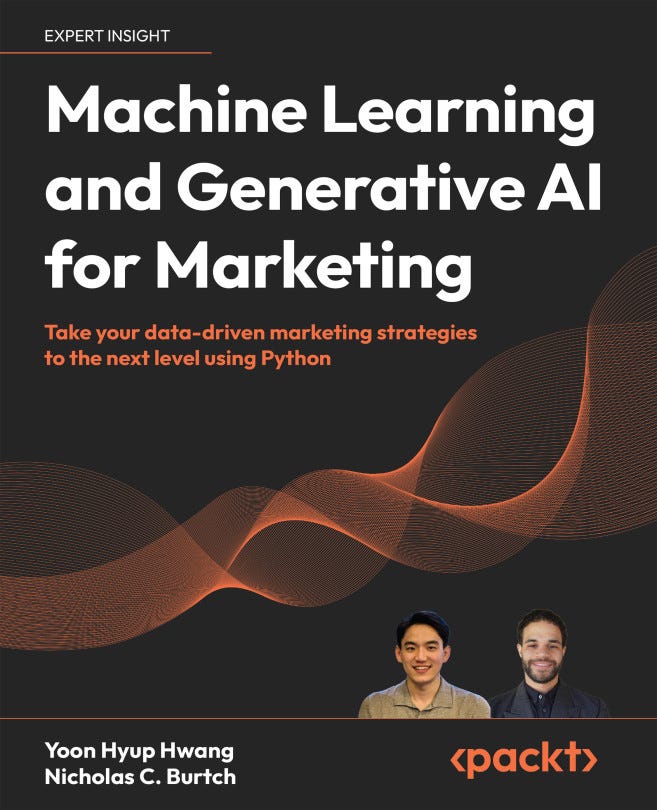This week:
💊 Pill of the week: Learning Paradigms in LLMs
📖 Book of the week: Machine Learning and Generative AI for Marketing
⚡ Power-Up Corner: Practical applications of Learning Paradigms
Let’s begin!
💊 Pill of the week
Large Language Models (LLMs) have demonstrated remarkable flexibility in adapting to various tasks. This article explores the spectrum of learning paradigms associated with LLMs, ranging from zero-shot to many-shot learning. We'll examine how these paradigms work, their applications, advantages, and limitations.
1. Zero-Shot Learning
Zero-shot learning enables a model to perform a task without any task-specific examples.
How it Works
In zero-shot learning, the model relies solely on its pre-trained knowledge and the natural language description of the task. For example:
Translate the following sentence from English to French:
"The cat is sleeping on the windowsill."The model must understand the concept of translation and apply its knowledge of both English and French to complete the task.
Applications
Zero-shot learning is valuable in situations where no labeled data exists or where it's impractical to provide examples:
Cross-lingual tasks for low-resource languages
Novel classification tasks with previously unseen categories
Generalization to new domains without additional training
Advantages and Limitations
Advantages:
Extreme flexibility in handling new tasks
No need for task-specific training data
Can generalize to completely novel situations
Limitations:
Generally less accurate than few-shot or fine-tuned approaches
Heavily reliant on the model's pre-trained knowledge
Sensitive to how the task is described in natural language
2. One-Shot Learning
One-shot learning is a paradigm where the model learns from just a single example.
How it Works
In one-shot learning, the model is provided with a single example of the task before being asked to perform it. For instance:
Here's an example of translating English to French:
"Hello" -> "Bonjour"
Now translate: "Goodbye"Applications
One-shot learning is particularly useful in scenarios where:
Data is extremely scarce
Quick adaptation to new tasks is necessary
Demonstrating the task format is important, but multiple examples are not available
Advantages and Limitations
Advantages:
Requires minimal task-specific data
Can quickly adapt to new, similar tasks
Useful for prototyping or testing LLM capabilities
Limitations:
Generally less accurate than methods with more examples
Highly sensitive to the quality and representativeness of the single example
May struggle with complex or nuanced tasks
3. Few-Shot Learning
Few-shot learning refers to an LLM's ability to perform a task after being shown only a few examples.
How it Works
In few-shot learning, the model is given a prompt that includes a small number of example inputs and their corresponding outputs. For instance:
Classify the sentiment of these movie reviews as positive or negative:
1. "This film was a masterpiece!" -> Positive
2. "I've never been so bored in my life." -> Negative
3. "The acting was superb and the plot kept me engaged." -> Positive
Now classify: "The special effects were impressive, but the story was lacking."After seeing these examples, the model can infer the pattern and classify new reviews.
Applications
Few-shot learning is particularly useful in scenarios where labeled data is scarce or expensive to obtain, such as:
Specialized domain tasks (e.g., medical text classification)
Rapid prototyping of NLP applications
Personalized language models adapting to individual user styles
Advantages and Limitations
Advantages:
Reduces the need for large, task-specific datasets
Enables quick adaptation to new tasks
Useful for low-resource languages or domains
Limitations:
Performance may not match fully fine-tuned models
Sensitive to the choice and order of examples provided
Let’s have a quick break…
📖 Book of the week
New section! Each week I’ll introduce an interesting book related to Data Science, Machine Learning or Generative AI!
This week is Machine Learning and Generative AI for Marketing: Take your data-driven marketing strategies to the next level using Python, by Yoon Hyup Hwang & Nicholas C. Burtch.
The book is aimed at marketing professionals and data analysts seeking to apply AI and machine learning for more personalized, data-driven marketing strategies. It's also suitable for tech-savvy marketers looking to leverage generative AI to solve real-world marketing challenges.
Why you should read it?
Increase customer engagement: Utilize predictive analytics and advanced segmentation to create more personalized and effective marketing campaigns.
Address real-world marketing problems: Combine Python skills with generative AI to develop innovative solutions for complex marketing challenges.
Leverage the latest AI trends: Stay on top of emerging AI technologies and apply them to create high-impact marketing strategies that drive success.
Optimize marketing strategies: Discover how to design and execute data-driven campaigns that significantly improve key metrics like conversion rates and customer lifetime value.
Hands-on approach: Benefit from practical, example-driven insights to enhance your marketing strategies and improve key performance metrics like customer retention and acquisition.
Let’s continue with the article!
4. Many-Shot Learning
Keep reading with a 7-day free trial
Subscribe to Machine Learning Pills to keep reading this post and get 7 days of free access to the full post archives.





